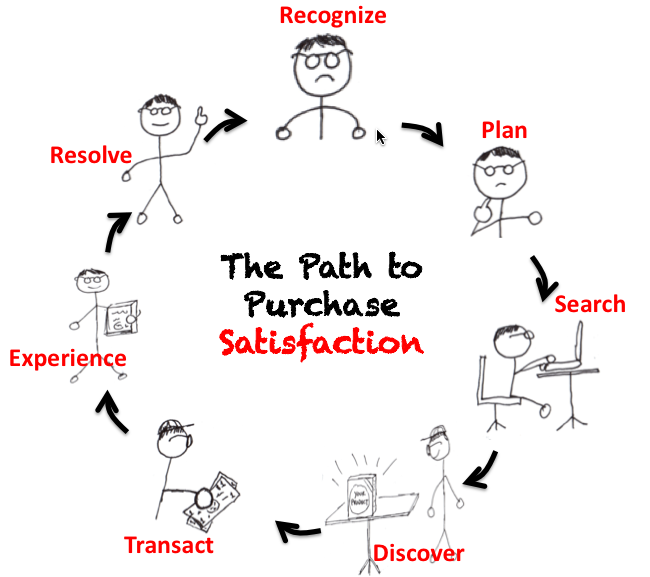 “What’s our consumer path to purchase? Did we win the Moment of Truth? Oh, wait, which moment was that: first or second? What about the new Zero Moment of Truth? Where on the Path did that occur? Do we have a strategy for winning those moments? By the way, do we need a different strategy for each step on the path and each moment of truth? And does it change our positioning? Paths, moments, strategies… how do they all fit together?”
“What’s our consumer path to purchase? Did we win the Moment of Truth? Oh, wait, which moment was that: first or second? What about the new Zero Moment of Truth? Where on the Path did that occur? Do we have a strategy for winning those moments? By the way, do we need a different strategy for each step on the path and each moment of truth? And does it change our positioning? Paths, moments, strategies… how do they all fit together?”
With all that’s emerging in the shopper marketing space, it’s important to step back and take a look at how it all hangs together and ask ourselves if the way we think about and use Path to Purchase (P2P) effectively drives better results. In fact, it turns out when you step back and map it out at a macro level, a couple things appear.
First, the path should really extend all the way to consumer satisfaction (and a little bit beyond). The game isn’t over when the consumer purchases your product. It continues through at least until the second moment of truth (usage). And if they are satisfied (‘delighted’ would be better) with their experience, it continues until they buy again and start the cycle over again, hopefully with a touch more inclination to buy from you next time. Rather than a linear path, when sketched out it’s a cycle that could more appropriately be named the Path to Purchase Satisfaction (or P2PS for short).
Each stage can be qualitatively or quantitatively described. Here’s the simple version:
Recognize– This is the first step where the consumer recognizes they have an unmet need. If you’re top of mind at this point… cool. You’re starting with a lead in winning the zero moment of truth.
Plan– Whether formal or informal, the next step a consumer takes is to begin planning if and how they are going to fulfill their need. If your product or store influences the plan, you’ve just increased your lead.
Search– Using a variety of search techniques, the consumer then begins pursuing whatever they think will fulfill their need. This is the finish line for winning the zero moment of truth. Be present in their search channels (including social media) or else.
Discover– This can take place either before they get to the store or after but hopefully they discover your product. This is critical in winning the second moment of truth (I hope your product is on the shelf at the right price point… and they see it in the few milliseconds they take to scan).
Transact– Believing they have found the item that will fill their unmet need, the consumer forks over cash to actually procure your item. Please note, they have already sunk considerable non-cash investment (e.g., time, effort, emotional investment) to get to this point. Congratulations if they’re going home with your product. If not, go back to step one on the path (and hopefully not all the way back to rethinking your value proposition).
Experience– Yes, you guessed it. This is the second moment of truth: the time where the consumer actually uses your product. If you disappoint at this point, you’re sunk. If you satisfy, you’ll favorably impact the next step. If you delight, the next step is a slam dunk and you start off on the path to purchase with a big lead the next time!
Resolve– Either consciously or sub-consciously the consumer makes a resolution about their experience with your product. What you want is a resolution that strengthens commitment to your product so you get that little bit of edge the next time they go down the path. Eventually, you want them to think about you as soon as they recognize they have an unmet need.
It is very useful to lay this out in a matrix. The steps on the Path become the columns across the top. Consumer attributes, value proposition attributes, and strategies become the rows. It’s useful in a lot of ways but most effectively for aligning and filling gaps in your strategies… that is, if you’re going to win on the Path to Consumer Satisfaction.
(Want to learn more about Path to Purchase and how it’s being used to drive results? Check out this year’s Private Brand MovementSeptember 19-21 in Chicago sponsored by IIR USA. Private Brands are winning with consumers throughout the Path to Consumer Satisfaction.)